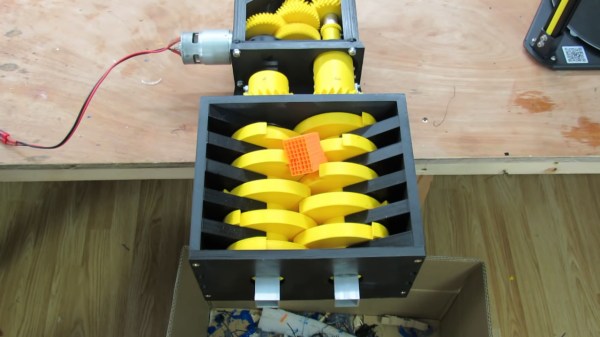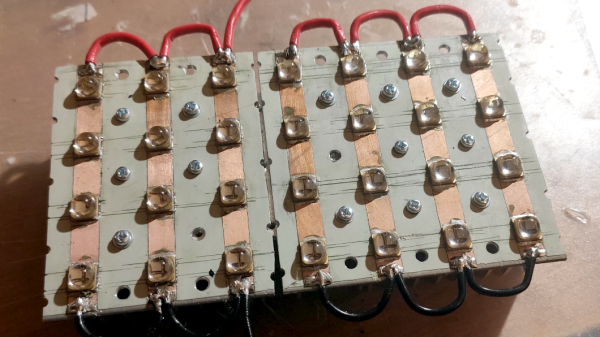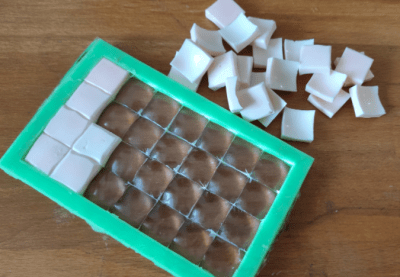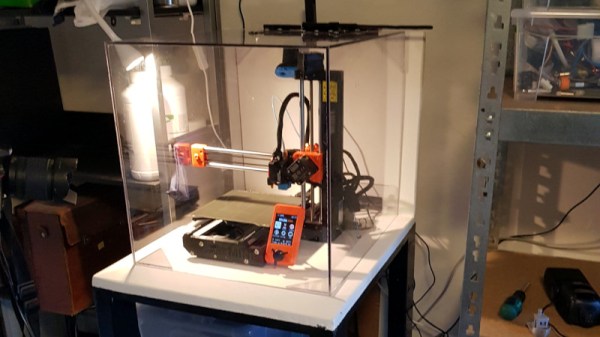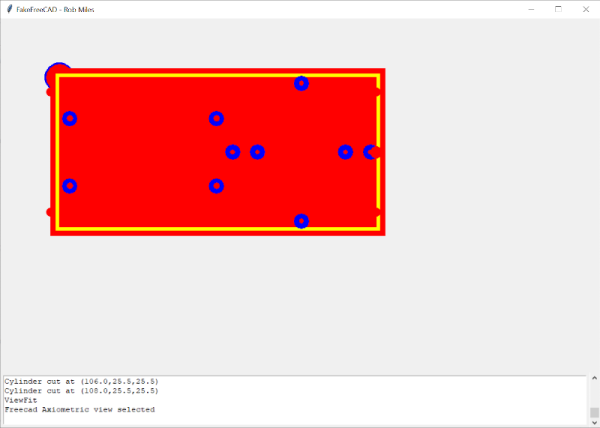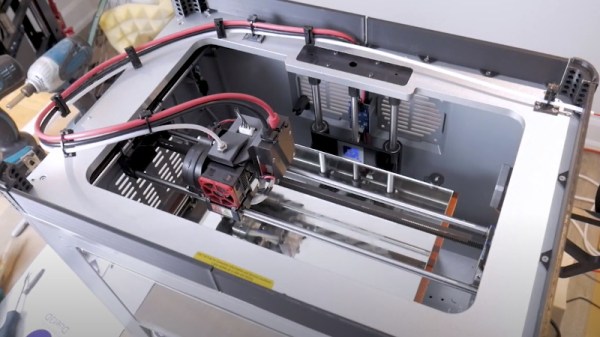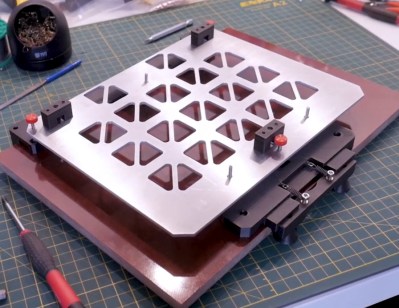[Brian Brocken] is at it again, building mechanisms that are as striking in their aesthetic as they are in their function. This time around, he’s extended a project we recently featured by adding a menacing 3D-printed shredder attachment. When you hear “3D-printed shredder” you think that paper is all you’ll be able to feed it, but this beast can eat its own by shredding parts from failed prints.
His original goal in building the high-torque 3D-printed gear box we looked at back in August was to show that 3D printed parts can be functional and not merely decorative. Using it as a winch to pull a car did a good job of that, but this goes much further. The very nature of shredder blades is to tear apart objects, but the forces that destroy those things are also present on the shredder parts themselves. Still, as you can see in the video below, the counter-rotating twin-shaft shredder mechanism does its work without catastrophic damage to the blades which were printed with “least 25 percent infill for the structural parts”, and up to five outer perimeters.
The result is a shredder that can gobble up small pieces of failed prints, in addition to chewing on paper, cardboard, and polystyrene with ease. [Brian] does show a few failures along the way, all in the gearbox itself. The first was a defect in the housing that let an gear shaft pop loose and was fixed up with a reprint. The second is a catastrophic gear failure when trying to shred a soda bottle. This is not surprising as PET is quite tough and not brittle like the waste prints were. The shredder teeth got bogged down, and the power of the motor strips teeth from a few gears. But when working, it’s oddly satisfying to watch that powerful gear ratio chip away at sacrificial materials.
If you’re more on the prowl for a way to usefully recycle your plastics, set the 3D-printed stress test of this one aside and take a look at the plastic shredder Fablab RUC built out of metal and plywood a few years back.
Continue reading “3D Printer Lets You Play “Will It Shred?””

